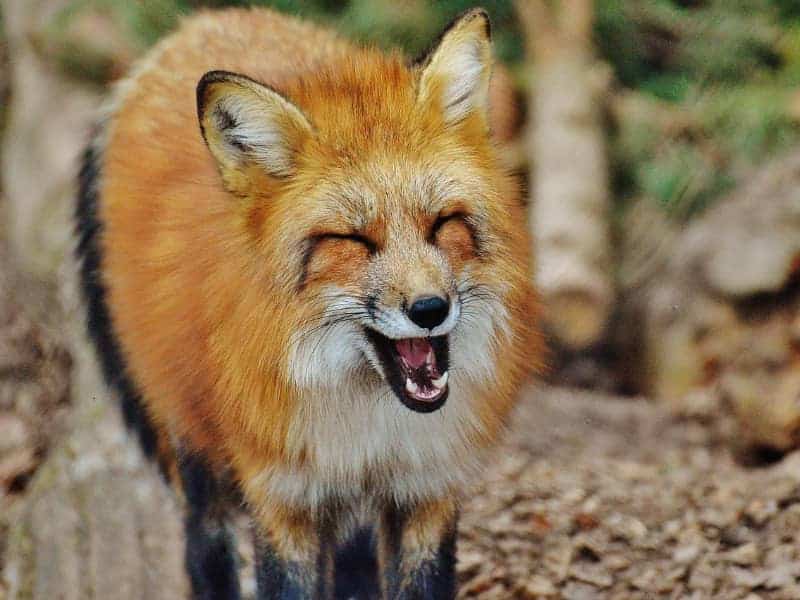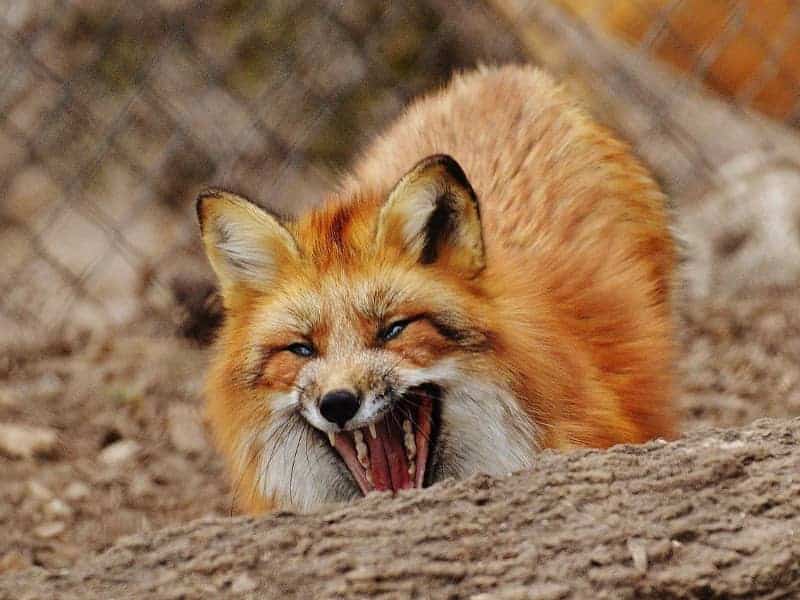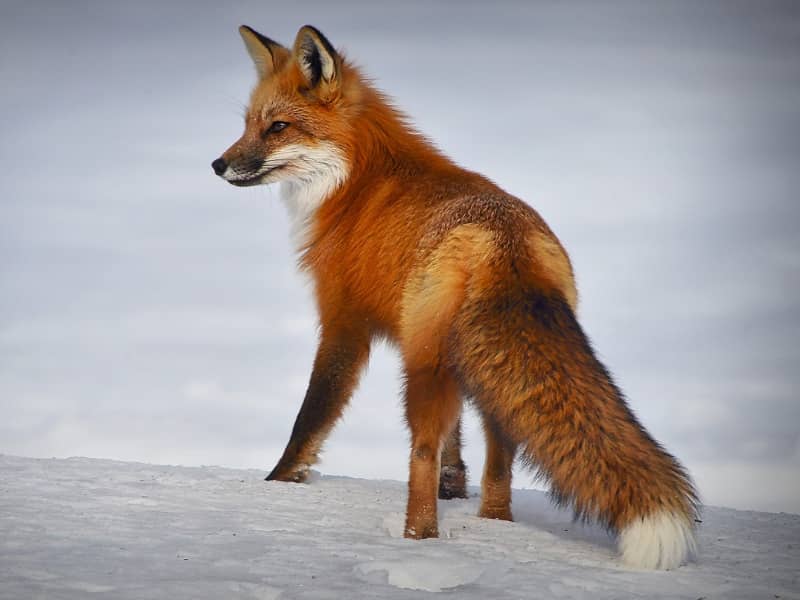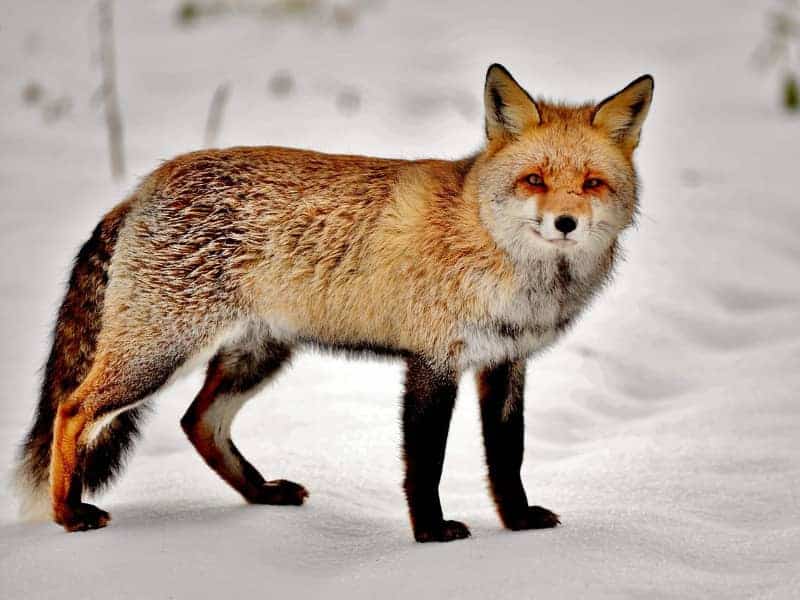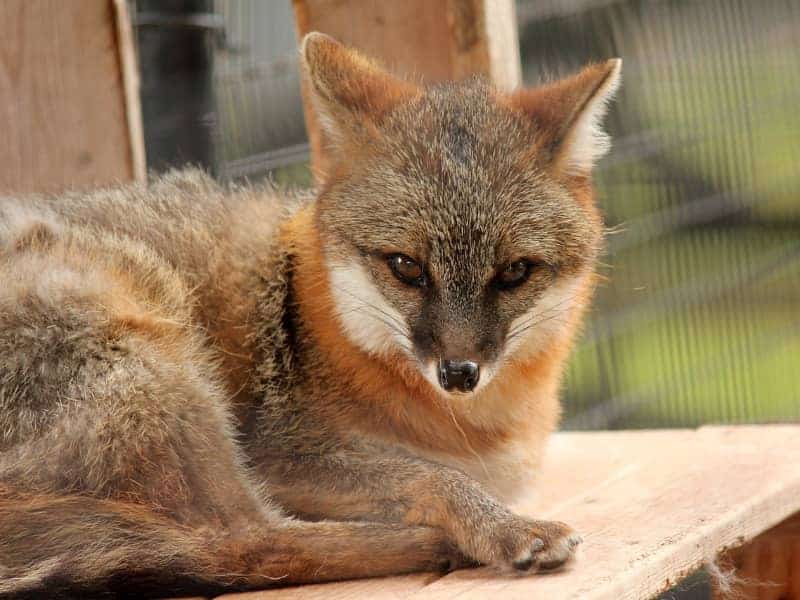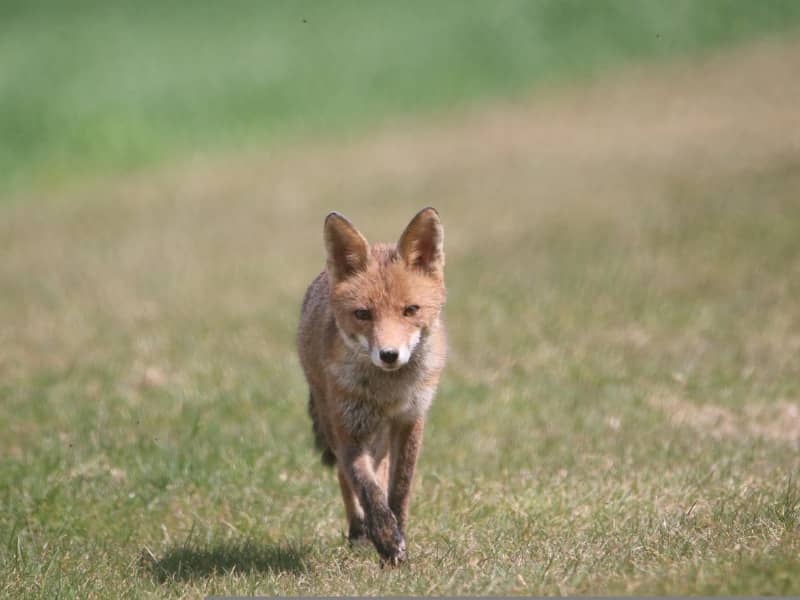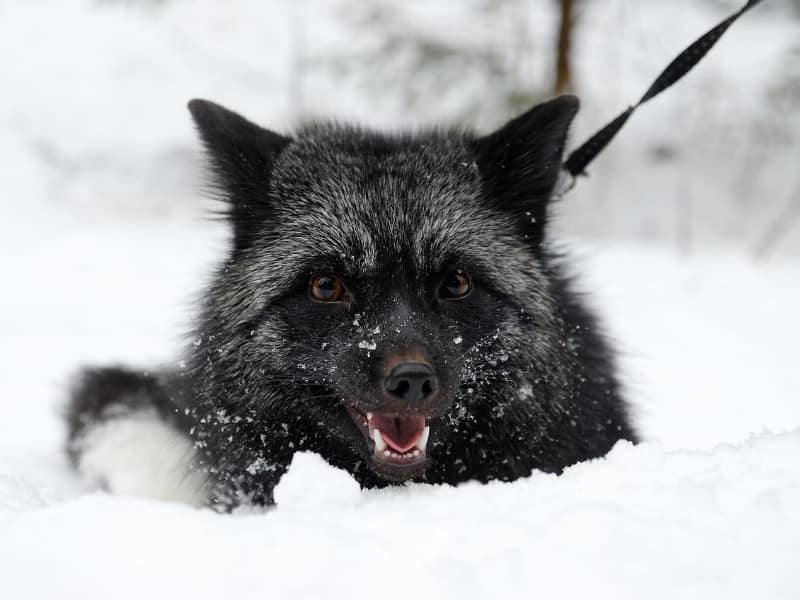
Black fox
A black fox in your garden? Then we can already congratulate you, mainly if you live in Central Europe. If you see a black fox in Germany, then it is certainly an animal that has escaped. What you have seen suggests a silver fox or a cabbage fox. Where exactly the differences to our red fox lie, we show you here.
Black fox in Germany
In Germany, there are actually foxes that have a hue that strongly resembles black at dusk. At night and at dusk, confusion can thus easily arise and it is claimed that the fox is black. However, it is almost certainly a red fox, which has a particularly dark coat.
These "black" foxes are called fire or cabbage fox. These are extremely rare in our climes and are a freak of nature. They are red foxes that have a darker coat color, but are not black. The coat has a hue that is a dark reddish brown. The white features that a fox coat has are not white in these coat colors, but gray to smoke.
Because of the many zoos in Germany foxes escape again and again, which are kept there, it is possible that you can discover a black fox. However, with 99% certainty, these are animals that come from other continents, mainly from North America. We will now describe them to you in more detail.
The silver fox
The closest fox to a black fox is the silver fox. He lives only in a small number in the north of North America and sporadically in northeast Siberia. It is a red fox descendant and accordingly its coat colors are different. Just as with the red fox, there are specimens that have stronger or lighter colors.
The silver fox has, analogous to the red fox, the same fur parts in a light tone, ranging from gray to bright white. However, the base color of the coat is black. It is described by experts as deep blue and has varying degrees of silver shading, which is sometimes more or less visible depending on the incidence of light. A silver fox never has white hair tips, these are always brown or black.
The silver shading, from which the silver fox gets its name, is not the same in all animals. So some have this shading only in the area of the front shoulder blades, others do not have it at all or it reaches over the complete back. On the belly and the tip of the tail the color variance, as described above, ranges from gray to bright white.
The silver fox is still a sought-after animal for the fashion industry. Animal farms mainly in Russia and Canada distribute the furs worldwide. Fortunately, the trade in furs has been declining for years. More and more people are realizing that killing animals for clothing is unnecessary and that the conditions in the breeders' farms are appalling.
The cross fox
The cross fox is also occasionally referred to as the black fox. However, this is not true. For it is a direct relative of the red fox and simply has dark features in its coat. The coat has the same basic tone as that of a red fox, but over the back and over the front shoulder blades runs a pronounced dark color gradient reaching into the black to the hind legs.
This species of fox lives in Canada, Alaska, as well as in Eastern Siberia and on the Kamchatka Peninsula. This fox has a low occurrence in the wild, but is highly sought after in the clothing industry. Accordingly, there are a large number of breeding facilities that breed this variety of fox to do business with the falls.
The cross fox is a so-called bastard form of the red fox. This means that they cannot be bred pure. To get this coat color, silver foxes must be crossed with red foxes. This mix creates this unusual coat color, which, if the black is well pronounced, is unfortunately extremely popular with clothing manufacturers and customers.
Black fox and the fur industry
If you think that there are only a small number of fur farms left, you are very wrong. Because about 60 % of all animals in the fur industry are kept in Europe. In 2019, there were about 5000 fur farms in the area of the European Union. In Poland alone there are said to have been between 801 1000, with around 5 million animals bred for the clothing industry.
Fortunately, some European states have already enacted a ban on fur farms losing their permits. In Austria, this already happened in 2005 and was followed by other states such as Luxembourg, Croatia, Macedonia, Serbia, Slovenia, Czech Republic and Belgium. Other countries, such as Norway and the Netherlands, have enacted laws that call for closure in 2024 and 2025, respectively.
In Germany, on the other hand, fur farms are regrettably still allowed. The legislator currently has no interest in protecting the animals. A lawsuit, which was designed to obtain the expansion of the cage area, was rejected by the court as negative.
A black fox is beautiful to look at, but we want to observe this in the wild, or in a spacious zoo. No animal should serve as an ornament to man.
Author

-
Garden animal - A life with nature
Welcome to my animal blog! My name is Dirk and I am happy to take you on my journey through the fascinating world of animals and gardening.
Born 54 years ago, I have had an insatiable curiosity for the animal world around me since childhood. Although I have moved professionally in other industries, my true passion has always been animals and nature. It is remarkable how a small garden has become such an important part of my life.
Many of my fondest memories are associated with the animals that share our home. Whether it's the curious squirrels that scurry across the trees in the morning, the colorful variety of birds that visit our feeders, or the busy bees and butterflies that pollinate our flowers, every moment with them is invaluable to me.
This blog is my contribution to share my experiences, discoveries and insights with like-minded people. Here I will share stories of unforgettable encounters with animals, give tips on gardening and creating wildlife-friendly habitats, and take you on my journeys through nature.
Thank you so much for being here!
Cordial,
Dirk aka garden animal
Last posts
- 27. February 2024PetsVeganes Hundefutter – Grün und Gesund?
- 18. January 2024ChickensOregano für Hühner
- November 27, 2023HamsterDiurnal hamsters
- November 24, 2023HamsterHamster hammock

